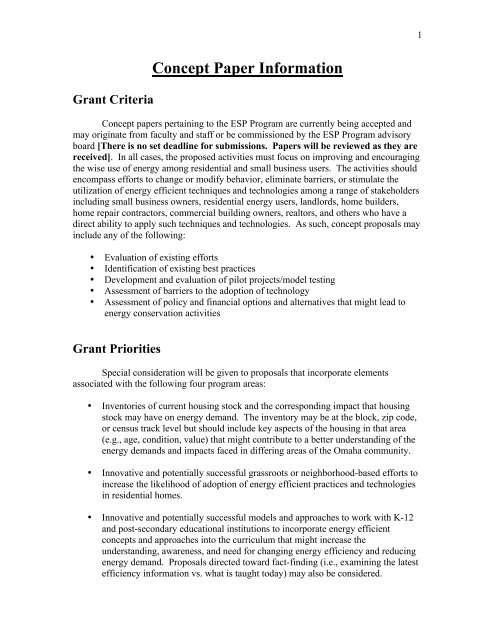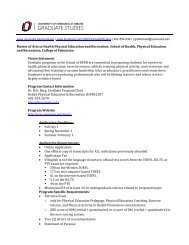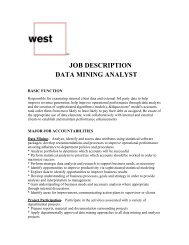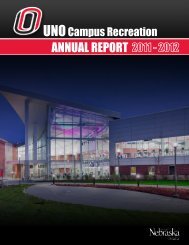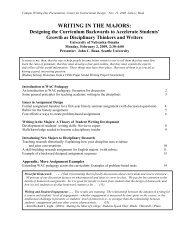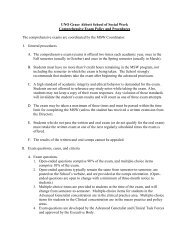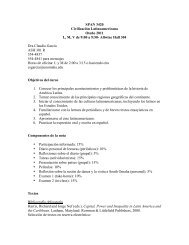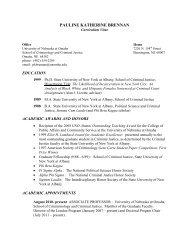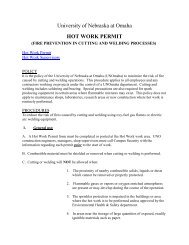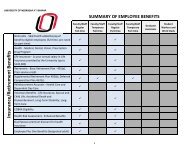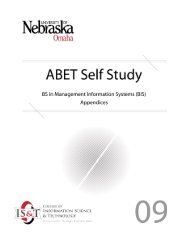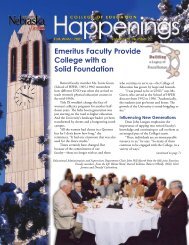Concept Paper Information Grant Criteria
Concept Paper Information Grant Criteria
Concept Paper Information Grant Criteria
You also want an ePaper? Increase the reach of your titles
YUMPU automatically turns print PDFs into web optimized ePapers that Google loves.
1<br />
<strong>Grant</strong> <strong>Criteria</strong><br />
<strong>Concept</strong> <strong>Paper</strong> <strong>Information</strong><br />
<strong>Concept</strong> papers pertaining to the ESP Program are currently being accepted and<br />
may originate from faculty and staff or be commissioned by the ESP Program advisory<br />
board [There is no set deadline for submissions. <strong>Paper</strong>s will be reviewed as they are<br />
received]. In all cases, the proposed activities must focus on improving and encouraging<br />
the wise use of energy among residential and small business users. The activities should<br />
encompass efforts to change or modify behavior, eliminate barriers, or stimulate the<br />
utilization of energy efficient techniques and technologies among a range of stakeholders<br />
including small business owners, residential energy users, landlords, home builders,<br />
home repair contractors, commercial building owners, realtors, and others who have a<br />
direct ability to apply such techniques and technologies. As such, concept proposals may<br />
include any of the following:<br />
• Evaluation of existing efforts<br />
• Identification of existing best practices<br />
• Development and evaluation of pilot projects/model testing<br />
• Assessment of barriers to the adoption of technology<br />
• Assessment of policy and financial options and alternatives that might lead to<br />
energy conservation activities<br />
<strong>Grant</strong> Priorities<br />
Special consideration will be given to proposals that incorporate elements<br />
associated with the following four program areas:<br />
• Inventories of current housing stock and the corresponding impact that housing<br />
stock may have on energy demand. The inventory may be at the block, zip code,<br />
or census track level but should include key aspects of the housing in that area<br />
(e.g., age, condition, value) that might contribute to a better understanding of the<br />
energy demands and impacts faced in differing areas of the Omaha community.<br />
• Innovative and potentially successful grassroots or neighborhood-based efforts to<br />
increase the likelihood of adoption of energy efficient practices and technologies<br />
in residential homes.<br />
• Innovative and potentially successful models and approaches to work with K-12<br />
and post-secondary educational institutions to incorporate energy efficient<br />
concepts and approaches into the curriculum that might increase the<br />
understanding, awareness, and need for changing energy efficiency and reducing<br />
energy demand. Proposals directed toward fact-finding (i.e., examining the latest<br />
efficiency information vs. what is taught today) may also be considered.
2<br />
• Innovative and potentially successful models and approaches to work with the<br />
entire building industry (building contractors, subcontractors, real estate<br />
companies, lending institutions, heating contractors, etc.) to incorporate energy<br />
education concepts and approaches for new and existing homes and small<br />
commercial businesses. The goal would be to increase understanding and<br />
awareness and to take action towards moving to energy efficient and energy<br />
reducing homes and businesses. Proposals directed toward fact-finding (i.e.,<br />
examining current education, construction, marketing, and lending practices vs.<br />
what will be required to market the next generation of healthy, energy efficient<br />
homes and small commercial buildings) may also be considered.<br />
In addition to these program areas, unsolicited proposals may also be accepted for<br />
review provided that they are consistent with the ESP Program’s goals and intents.<br />
Types of unsolicited proposals may include analyses of issues such as:<br />
• Ductwork, air leakage, and duct design and how they affect the efficiency of<br />
heating and cooling equipment and what impact the ductwork system has on<br />
energy costs (sealing ductwork is listed in the current 2006 International<br />
Residential Codes). Focus should take place on the code to ensure it remains in<br />
the code and should be a requirement on all new homes for ductwork in either a<br />
conditioned or unconditioned space.<br />
• What assistance is available to homeowners and assessments of financial and tax<br />
incentives as mechanisms to change behaviors of small businesses, residential<br />
property owners, homebuilders, realtors, and others impacting use of energy<br />
efficiency technology.<br />
• How to incorporate Manual J to match equipment to house size (this requirement<br />
is also listed in the current 2006 International Residential Codes). Focus should<br />
take place on the codes to ensure this stays in the code and should be a<br />
requirement for all new homes.<br />
• How to get HVAC dealers to use the latest information to size, sell, and install the<br />
most efficient equipment.<br />
• How does a base energy code home compare to a home that is built above<br />
minimum code efficiencies, in constructions costs, and energy performance.<br />
Most grants are anticipated to be competitive in nature with significant preference<br />
being given to proposals that:<br />
• Are interdisciplinary<br />
• Include students in the proposal activities<br />
• Demonstrate an ability to leverage additional external resources<br />
• Have the potential for immediate application


